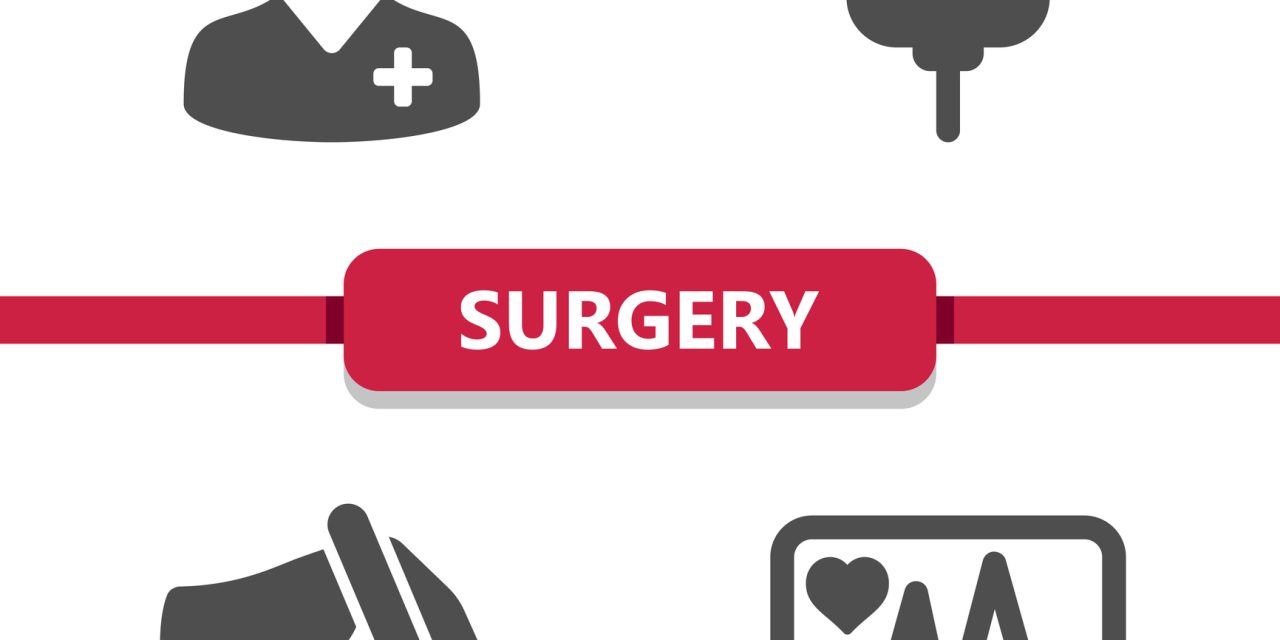Negative pressure wound therapy is an effective option for treating post-surgical abdominal wound healing impairment, researchers reported.
Their study found that time to wound closure was significantly shorter with negative pressure wound therapy (NPWT) compared to conventional wound therapy (CWT), and that wound closure rates (within a 42-day period) were significantly higher.
Dörthe Seidel, University of Witten/ Herdecke, Cologne, Germany, and colleagues did find, however, that NPWT resulted in more wound-related adverse events compared to CWT.
The study was published in JAMA Surgery.
Complication rates after major surgery are a significant health problem and can include wound healing disorders — such as subcutaneous abdominal wound healing impairment (SAWHI) — caused by the surgical procedure itself, patient-related factors, or both.
SAWHI manifests itself in many ways, the most serious of which is fascia dehiscence — with a very high mortality rate — in which the wound completely separates and exposes the underlying organs.
According to Seidel and colleagues, SAWHI is usually treated with conventional wound dressings that are applied according to the condition of the wound, the experience of the physicians, and the preference of the patient. NPWT is a technique that involves a sealed wound dressing connected to a pump that draws out excess fluid from the wound. It is beneficial, the authors wrote, because it promotes granulation tissue formation, reduces the frequency of dressing changes by keeping wounds clean, removes high volumes of wound exudate, and reduces odor.
However, according to Seidel and colleagues, comparative studies assessing the effectiveness and safety of NPWT in SAWHI are lacking. Therefore, in this study their objective was to compare the effectiveness and safety of NPWT with CWT in SAWHI after surgery in clinical practice.
The study included 507 participants — randomly assigned to either NPWT (256 participants) or CWT (251 participants) — from 34 abdominal surgical departments in hospitals in Germany, Belgium, and the Netherlands
The primary outcome was the time until wound closure within 42 days, while secondary outcomes included wound closure rate, quality of life, pain, and patient satisfaction.
Mean time to wound closure was significantly shorter in the NPWT arm (36.1 days) than in the CWT arm (39.1 days) (difference, 3.0 days; 95% CI 1.6-4.4). Wound closure rate within 42 days was significantly higher with NPWT (35.9%) than with CWT (21.5%) (difference, 14.4%; 95% CI, 6.6%-22.2%).
No recurrences occurred after complete, sustained, and verified wound closure in either treatment arm.
QOL scores did not differ significantly between the 2 treatment arms, while subjective satisfaction was marginally better among NPWT patients.
As for safety, of those patients who complied with therapy (excluding patients with unauthorized treatment changes) NPWT patients had a greater risk of wound-related adverse events (RR, 1.51; 95% CI, 0.99-2.35). Most of these adverse events were periwound macerations and local infections with signs of inflammation.
“This increased number resulted mainly from technical malfunctions of the device, as well as from a higher number of wound-related AEs, which represent actual unfavorable effects of wound treatment,” the authors observed, adding that periwound macerations is usually caused by inadequate wound drainage and can be avoided with adequate protection.
Seidel and colleagues concluded their results confirm the results of other clinical trials showing the benefits of NPWT in other wound types.
In commentary accompanying the study, Adam C. Fields, MD; Kamal M. F. Itani, MD, both of the Department of Surgery, Veterans Affairs Boston Healthcare System, Boston, Massachusetts, agreed that the while the study does provide more evidence of the benefits of NPWT, those benefits come “at a potential cost.”
For example, Fields and Itani noted that NPWT dressings must be changed 2 or 3 times a week, something which often requires skilled nursing care. In addition, they calculated that since the daily cost of NPWT equipment is $94 per day, the total cost would be $4,000 if NPWT was required for 42 days.
“The results of this study are encouraging but not definitive,” wrote Field and Itani. “Controlling for delayed primary closure, ensuring equipoise, avoiding serious deviations from protocol, and performing a cost-effectiveness analysis are paramount for more conclusive evidence.”
Take Aways:
-
Negative pressure wound therapy (NPWT) is effective in treating post-surgical abdominal wound healing impairment; compared to conventional wound therapy, it shortens time to wound closure and results in higher closure rates.
-
Be aware that compared to conventional wound therapy, negative pressure wound therapy resulted in more wound-related adverse events.
Michael Bassett, Contributing Writer, BreakingMED™
Seidel reported grants from Kinetic Concepts Incorporated (KCI), an Acelity company, during the conduct of the study; other support from Smith & Nephew Honoraria for lectures, grants from Smith & Nephew, KCI, and from German statutory health insurance funds (AOK-Bundesverband, Verband der Ersatzkrankenkassen (vdek), Knappschaft) outside the submitted work.
Itani reports serving as the principal investigator for a study funded by an investigator-initiated award given to his institution by Pfizer and serving as a research consultant for Eupraxia.
Cat ID: 159
Topic ID: 97,159,730,192,925,159


